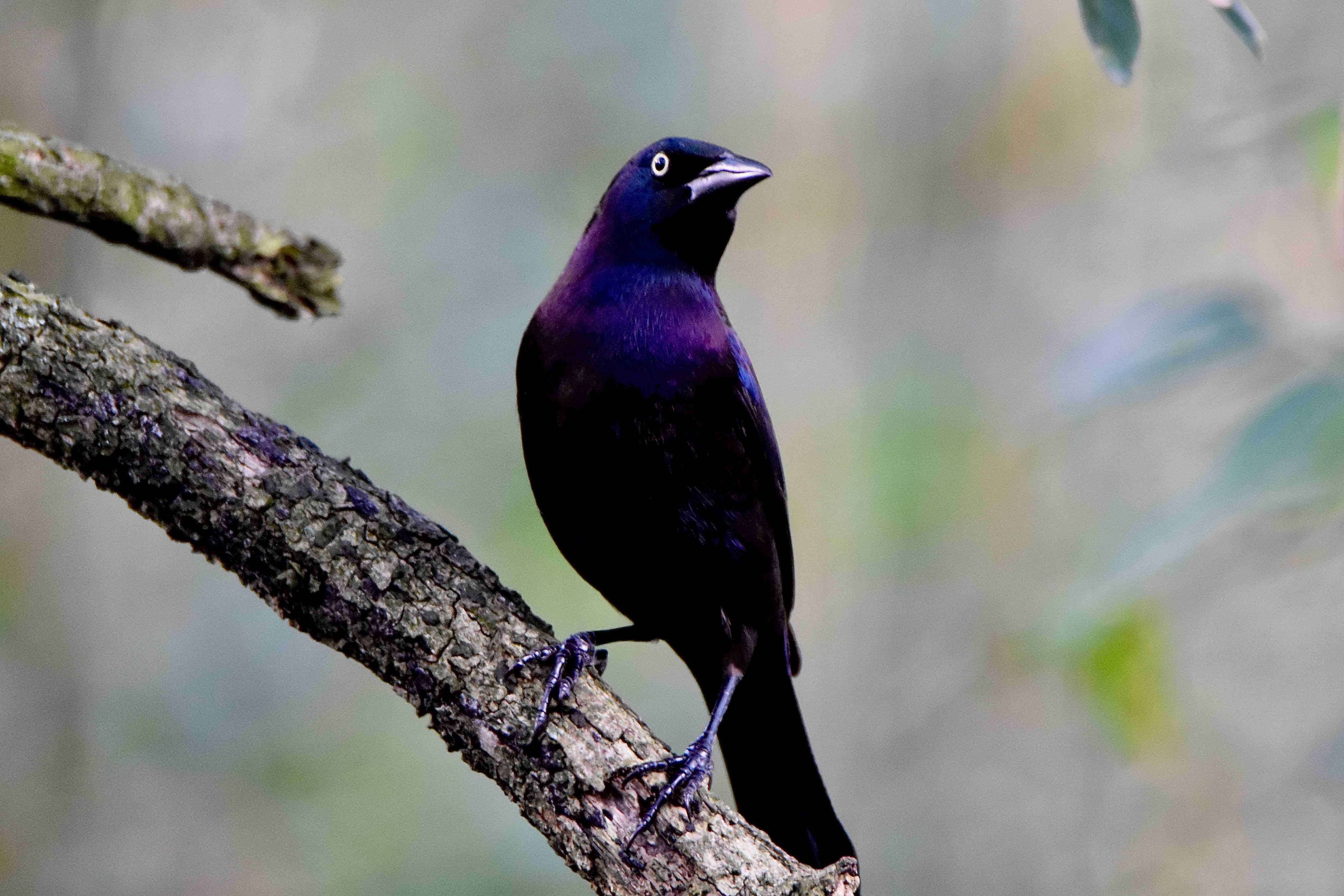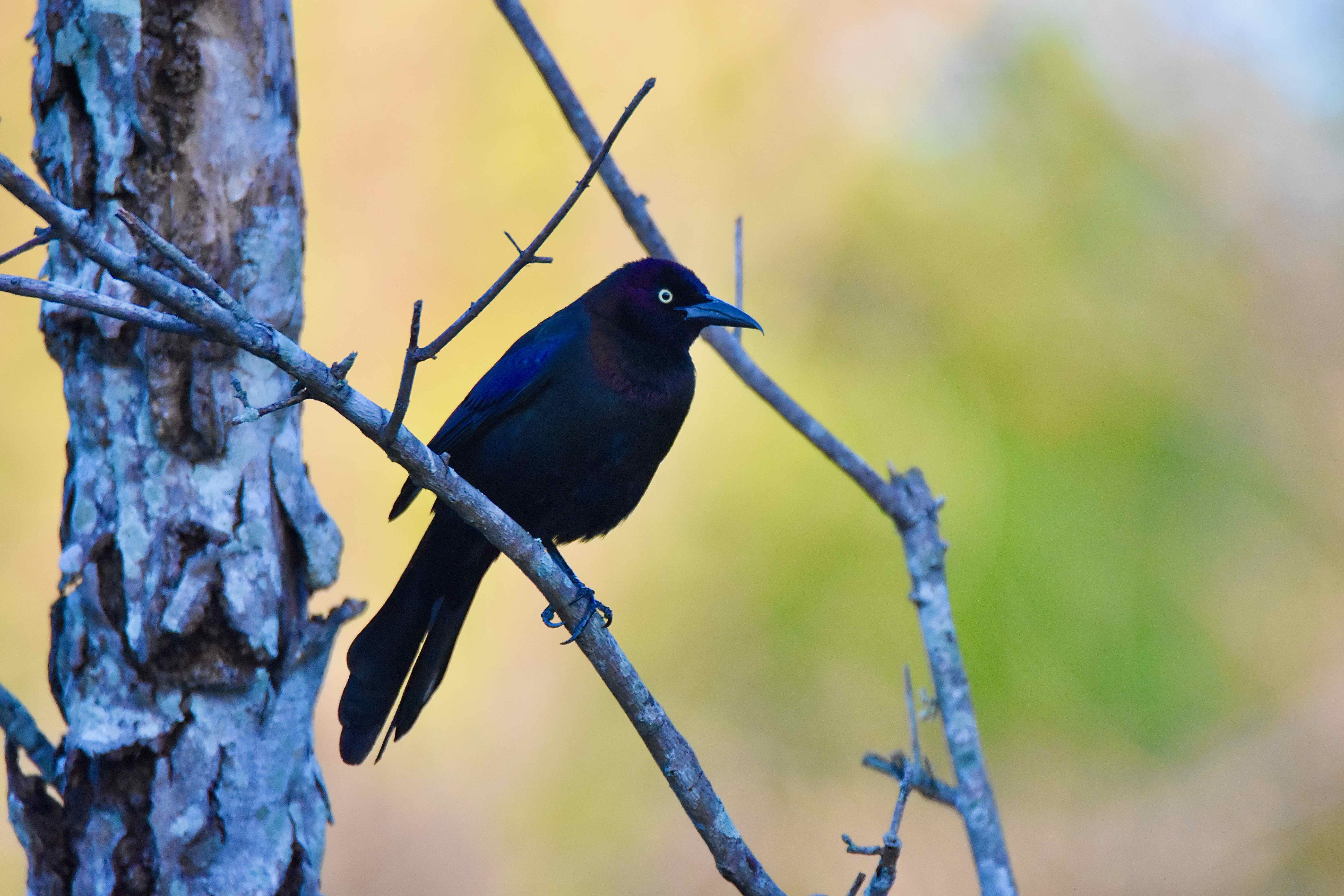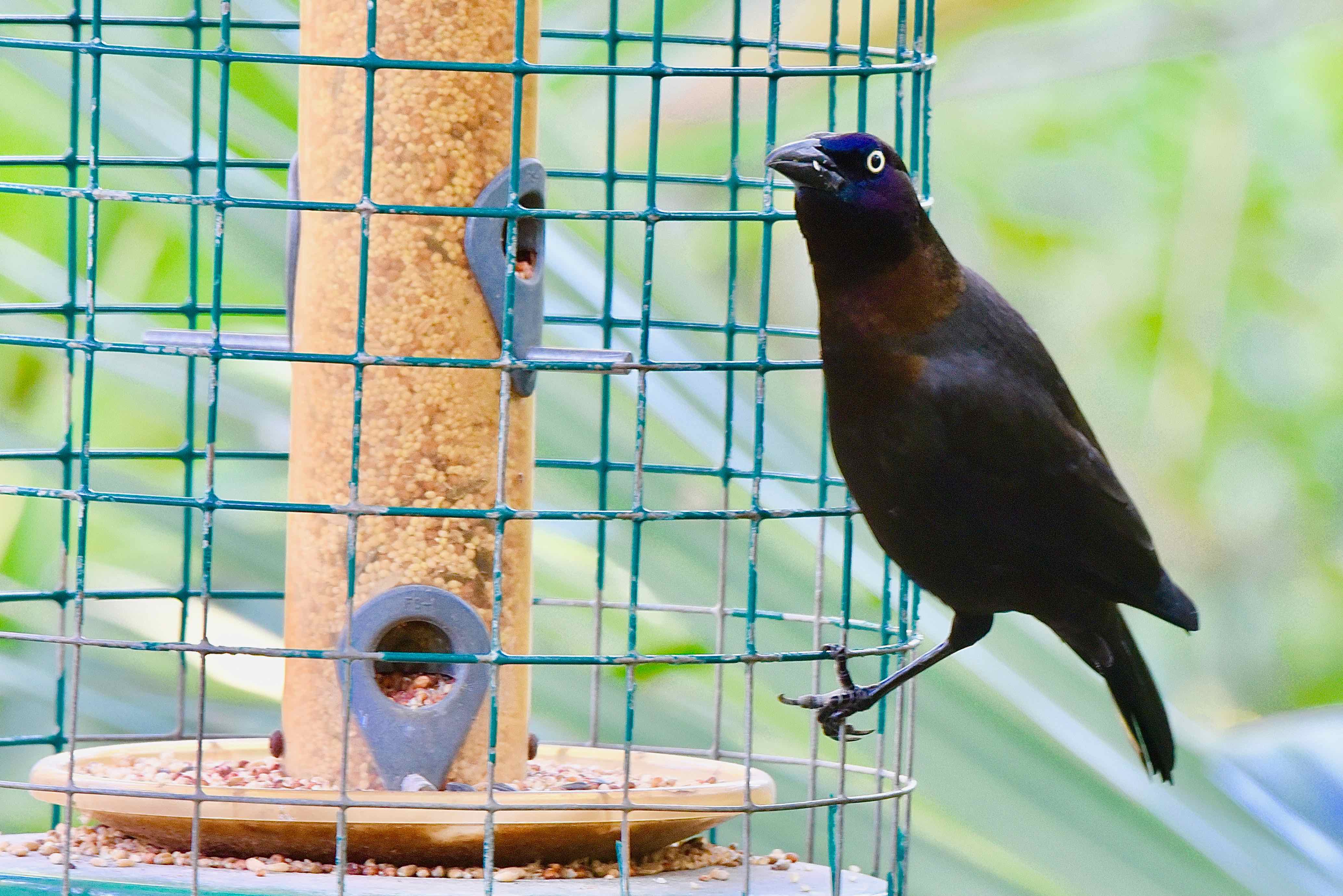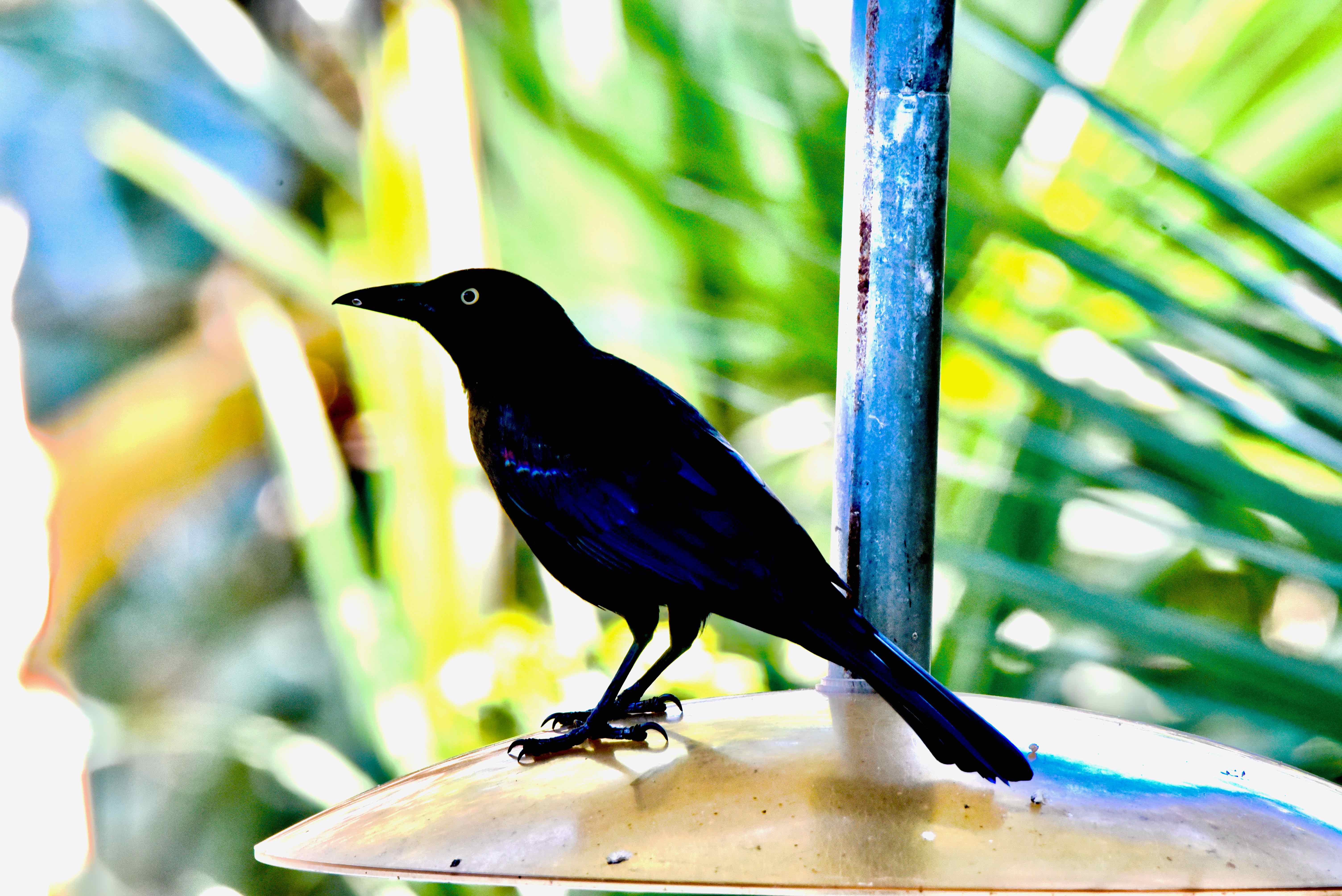
Common Grackle photographed at Green Cay Nature Center, Boynton Beach, Palm Beach County, in December 2017.
Look closely at this black bird and in the right light, you'll see it isn't black at all. Rather, it is an iridescent purple, or green, or bronze, depending on geography. But not black.
This is the common grackle, Quiscalus quiscula, cousin to the boat-tailed grackle. It's similar in shape and size to the boat-tailed grackle but its tail is not quite as over-sized in relation to its body as the boat-tailed. Still large, mind you, just not as large.
They're year-round residents of Florida, and common ones at that, no pun intended. Their range extends over most of the United States and Canada east of the Rocky Mountains, and is expanding farther north and west. In most of its range, it's a stay-at-home bird; farther north it becomes migratory.
The vast range of the common grackle has led to the development of three separate subspecies that vary by color. In the North and to the west of the Appalachian Mountains, common grackles are iridescent bronze; in the southeast, they become purple, as most of the birds on this page are. The third is known as the Florida subspecies, and its green.
In South Florida, we get a mix of the green and the purple. Males are more colorful than females and are larger over all, with a body length of 13 inches or more. Both males and females have long legs and yellow eyes. Common grackles also have more of a flat head, while their boat-tailed cousins are more round.
One look at the bill will tell you that common grackles are omnivores — birds that will eat a wide range of food. It's long enough to grab insects, spiders and crustaceans but sturdy enough to crack seeds and grains. They will eat mice, fish, lizards, frogs, bird eggs and young birds. They will also eat garbage. They can be both blessing and curse to a farmer, eating insect pests but also eating crops — they will eat not just grain but newly sprouted corn plants.
Common grackles are known to gather in huge flocks with other black birds, flocks that can number in the thousands and even millions, which exponentially increases the amount of damage they can do to a field. Some people have used this to justify attempts to eradicate these flocks, but common grackles are protected under the Migratory Bird Treaty Act. Common grackles are also known to follow plows, picking off bugs roused by the work.
Open woodlands, forest edges, open fields and hammocks are favorite habitats for common grackles. They're also well suited for suburban settings. About the only place they're not to be found: deep woods. They are, however, less likely to be seen in saltwater settings than boat-taileds.
Common grackles typically have one brood a year, sometimes two. Females pick the nest site and do most of the construction, with males sometimes helping out. The nest is a cup made of branches, grass, leaves, plus bits of string, paper and whatever, reinforced with mud. The site is usually high in a conifer tree. Clutches are one to seven eggs, usually five or six. Females do all the sitting, which lasts 11 to 15 days. Both parents feed their offspring, mostly insects; fledging comes at 10 to 17 days. Grackles are known to live into their early 20s, but only half make it to adulthood.
Common grackles are members of Icteridae, the blackbird family.
Green Cay Nature Center



